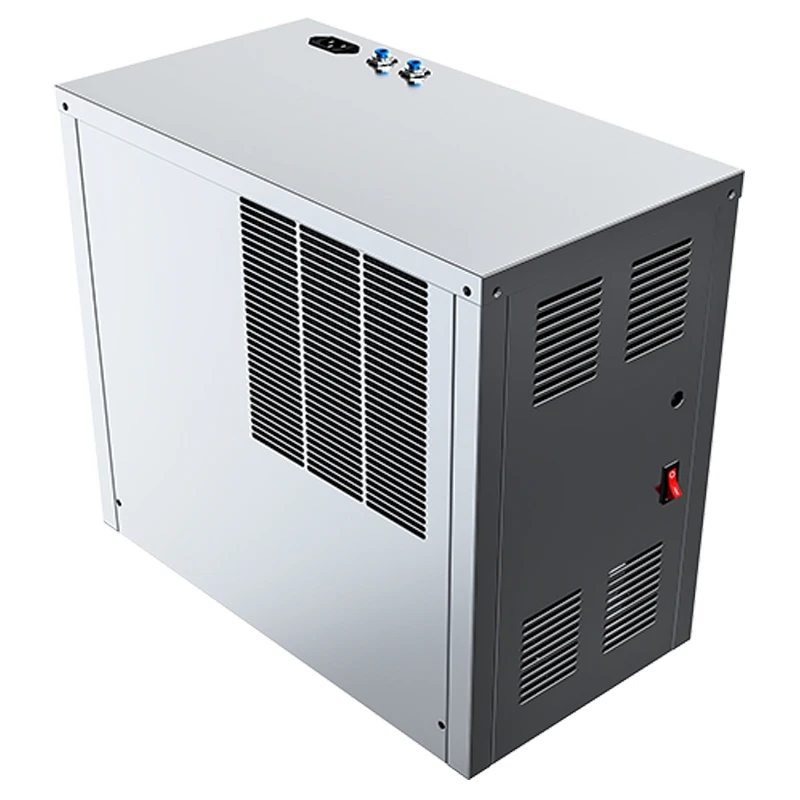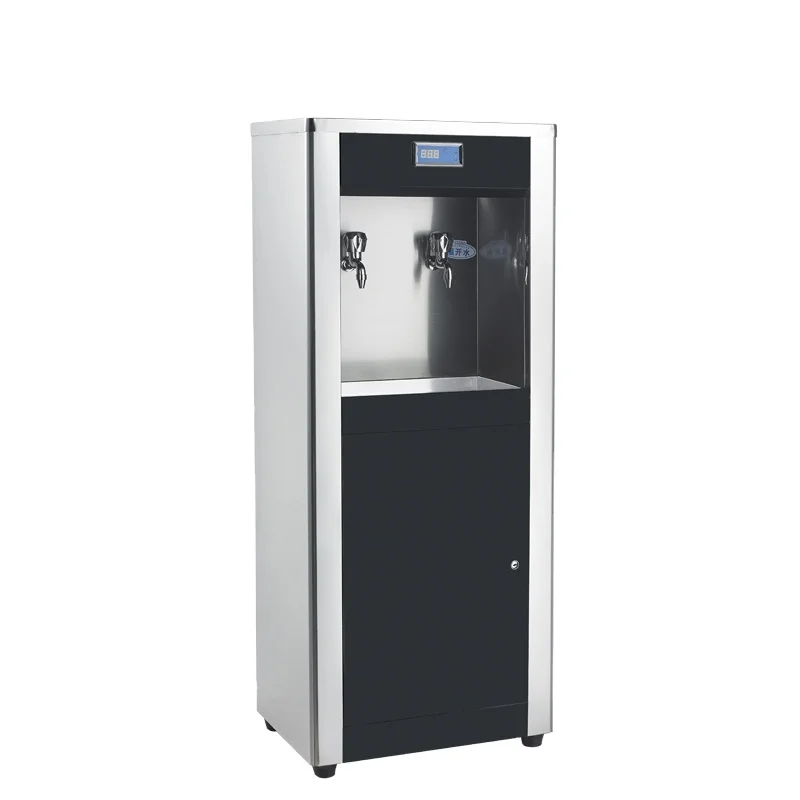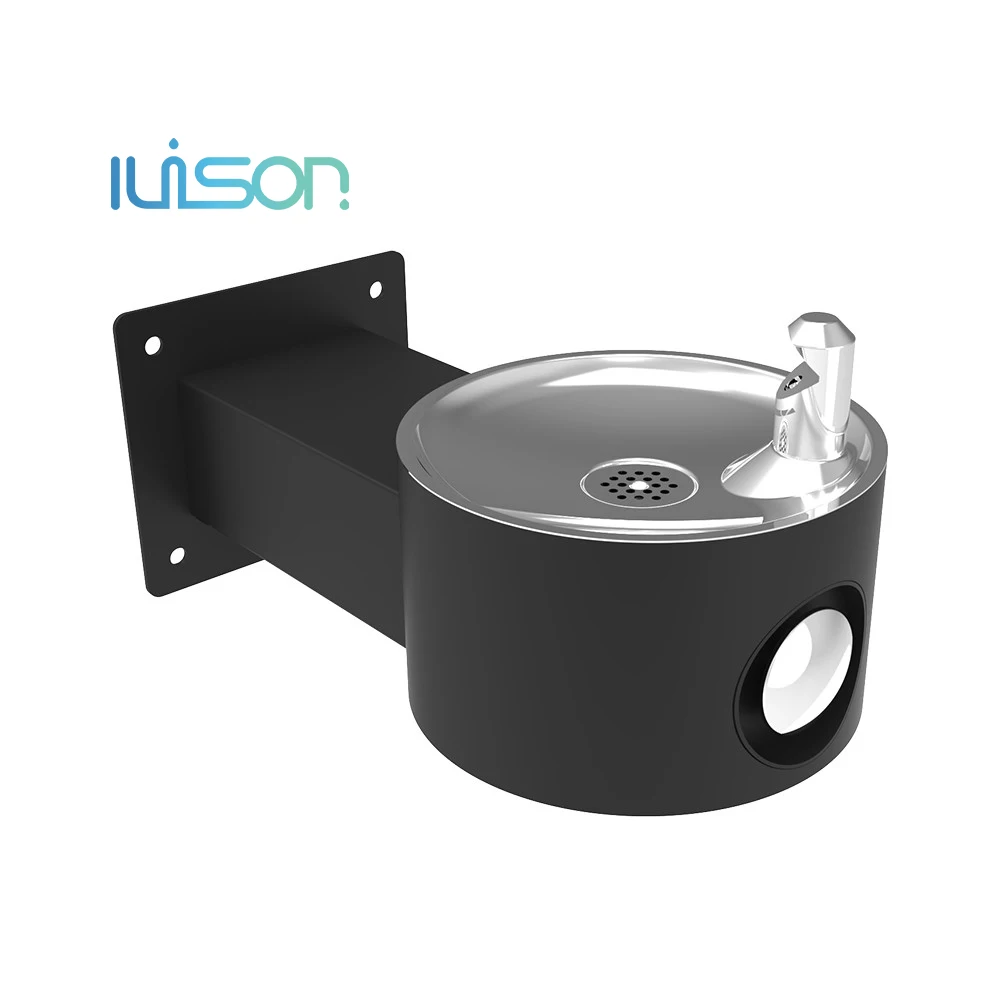Home > News > Company News
Quality insulation is crucial in commercial water dispensers to prevent heat gain and maintain cold water temperatures. Without proper insulation, dispensers would consume more energy to restore cold temperatures, leading to increased operational costs. Various insulation technologies, such as foam and polystyrene, are widely adopted in commercial settings due to their effectiveness in minimizing heat transfer. A study published by the American Society of Heating, Refrigerating and Air-Conditioning Engineers (ASHRAE) highlights that improving insulation can yield energy savings of up to 20%, demonstrating the importance of insulation technology in enhancing thermal efficiency. These savings contribute significantly to reducing overall energy consumption, making thermal optimization an essential component in water dispenser design.
Incorporating energy-saving modes within commercial water dispensers helps to minimize energy usage during low-demand periods, such as overnight or off-peak hours. Many dispensers now offer programmable timers that enable businesses to align operating hours with peak activity times, further optimizing energy consumption. According to a report by the International Energy Agency (IEA), programmable energy-saving modes can lead to energy reductions of up to 30%. These technologies not only reduce operational costs but also contribute to sustainability efforts by lowering energy usage and reducing the carbon footprint of businesses.
The ENERGY STAR® certification signifies that appliances meet strict energy efficiency guidelines set by the U.S. Environmental Protection Agency. Selecting ENERGY STAR® certified water dispensers ensures superior energy savings compared to non-certified models. Businesses that have transitioned to ENERGY STAR® dispensers report reduced energy bills and increased operational efficiency. For example, a testimonial from a large commercial building showed a 15% reduction in energy costs post-upgrade, underscoring the economic benefits of investing in energy-efficient models. By choosing certified models, businesses can not only save on energy costs but also support global efforts to reduce emissions.
Smart temperature control systems revolutionize commercial water dispensers by optimizing water temperatures while minimizing energy use. These systems integrate sensors that adjust energy use in real-time based on environmental conditions, ensuring efficient operation. Businesses utilizing smart control systems have reported improved efficiency and cost savings. For instance, case studies indicate up to 25% improvements in energy costs for companies that have adopted sensor-based temperature optimization technologies. Implementing smart systems ensures that water dispensers provide the necessary functionality without unnecessary energy depletion, an approach highly beneficial in today's sustainability-focused market.
Energy-efficient cold water dispensers significantly cut kilowatt-hour (kWh) usage, leading to reduced operational costs for businesses. These dispensers are designed to use advanced cooling technologies that consume less electricity compared to standard models. For example, a switch from a conventional water dispenser to an energy-efficient model can save a business up to 30% in energy costs annually. Industry reports indicate that over the lifecycle of a water dispenser, the cumulative savings in operational costs can be substantial, making such investments highly economical. By reducing electricity consumption, businesses not only cut costs but also contribute to environmental conservation.
Eco-coolant technologies play a crucial role in enhancing the sustainability of water dispensers. These technologies use refrigerants with a lower global warming potential (GWP), minimizing the environmental impact while maintaining effective cooling. For instance, refrigerants like R-600a are increasingly popular in green water dispenser models due to their eco-friendliness. Studies have shown that adopting eco-coolants can drastically reduce the carbon footprint of commercial refrigeration systems, aligning with global environmental goals. By integrating these technologies, businesses can meet consumer demands for sustainable solutions while complying with stringent environmental regulations.
Energy-efficient water dispensing systems ensure compliance with stringent energy efficiency regulations, both locally and nationally. Many regions have established energy standards that commercial appliances must meet to avoid penalties and qualify for energy rebates. By adhering to these regulations, businesses not only evade potential fines but also benefit from cost savings through rebates. Insights from regulatory bodies emphasize the importance of integrating energy-efficient technologies in commercial building operations, which in turn enhances market credibility and offers competitive advantages in the marketplace. Compliance with these standards affirms a company's commitment to sustainability and cost-effective operations.
Energy-efficient water dispensing systems often incorporate advanced filtration technologies to enhance water quality, benefiting overall health and productivity in commercial environments. These systems utilize cutting-edge filtration processes, such as reverse osmosis and ultraviolet purification, to remove impurities and ensure clean drinking water. The presence of clean water is linked to improved health outcomes and increased employee productivity, as access to high-quality water is essential for maintaining hydration and well-being. Research data indicates that customer satisfaction significantly improves in settings where efficient water filtration is prioritized, reinforcing the value of quality assurance in water dispensing systems.
Under-sink water coolers offer substantial space-saving advantages, particularly beneficial in environments with limited room. These units are ingeniously designed to fit beneath counters, maximizing usable space while still providing reliable access to cooled water. A notable feature is the eco-mode function, which significantly enhances energy conservation by reducing power usage during low demand periods, leading to overall reduced operational costs. Moreover, stainless steel models are celebrated for their robust construction and long-lasting performance, making them a preferred choice for many consumers seeking durability and efficiency.

Dual-temperature drinking fountains are ideal for educational settings where diverse user preferences are common. These systems efficiently provide both hot and cold drinking options, catering to varied hydration needs. Constructed from stainless steel, they ensure lasting durability and minimal maintenance. Safety and hygiene are paramount, with features such as antimicrobial protection and filtered water delivery making them well-suited for schools. Testimonials from school administrators often highlight favorable feedback from students and staff, alongside a notable reduction in single-use plastic waste, aligning with sustainability goals.

Wall-mounted drinking systems present an effective solution for high-traffic environments, seamlessly integrating into spaces without occupying floor area. Equipped with smart sensors, these systems intelligently manage water dispensing, optimizing energy use and minimizing wastage. This technology adapts to demand, dynamically altering operation to conserve energy during inactive periods. Users frequently report high satisfaction due to the system's efficiency and ease of access, emphasizing the added convenience offered by the wall-mounted design in bustling settings.

Timely filter replacements are crucial in maintaining both water quality and the efficiency of commercial cold water dispensers. A clogged or dirty filter not only degrades water quality but also forces the system to work harder, increasing energy consumption and reducing the lifespan of the dispenser. An effective maintenance schedule is routinely checking filters every three to six months and replacing them as needed, depending on the manufacturer’s guidelines and usage level. Maintenance professionals often recommend setting up a regular reminder system or logging schedule for these replacements to ensure timely action. These practicing habits contribute to maintaining system efficiency and prolong the equipment’s life, preserving both performance and energy efficiency.
The cleanliness of condenser coils is vital for the optimal functioning of water dispensers. Neglected coils can lead to increased energy consumption and operational issues due to restricted airflow and inefficient heat exchange processes. Regular cleaning of the coils should involve using a coil brush and a gentle cleanser to remove accumulated dust and debris, ensuring the system runs smoothly. While some businesses prefer professional services for coil cleaning due to their thoroughness and expertise, a do-it-yourself (DIY) approach can also be effective if performed meticulously following manufacturer guidelines. Maintaining clean coils is an essential practice for sustaining energy efficiency and ensuring device longevity.
Monitoring and adjusting the water flow rate is a key strategy in maintaining the efficiency of commercial water dispensers and preventing water wastage. Advanced technology enables real-time flow monitoring, allowing users to adjust settings quickly and prevent unnecessary energy use. Businesses like restaurants and offices have reported improved efficiency by implementing such technology, which often incorporates sensor-based systems that automate adjustments according to usage patterns. Real-time monitoring helps in pinpointing inconsistencies or potential issues, offering businesses an in-depth understanding of their usage and facilitating proactive management of their water dispensing systems.
The integration of IoT technology in commercial water coolers is revolutionizing how organizations monitor water consumption patterns. These systems allow businesses to receive real-time alerts on water usage inefficiencies, potential leaks, or maintenance needs, thus ensuring optimal performance of the water cooler or dispenser. For instance, IoT-enabled systems can notify operators when filters require changing or when abnormal water usage patterns are detected, thereby preventing wastage and saving costs. Companies have implemented IoT technology and reported significant operational efficiency improvements. These advanced systems underscore the growing trend towards smarter, more efficient commercial water coolers that not only save resources but also enhance sustainability practices.
Innovative heat exchange technology is becoming crucial in enhancing the energy efficiency of commercial water coolers. These systems optimize the cooling process by better managing heat transfer, consequently reducing the overall energy demand for maintaining desired water temperatures. Experts in the field highlight that businesses adopting heat exchange systems can achieve significant long-term cost savings due to decreased energy consumption. Successful integration of such technology in water dispensers and coolers not only cuts down on environmental impact but also aligns with broader goals of sustainability that appeal to eco-conscious consumers. This technology is not just about cooling efficiency but also about responding to the environmental regulations that prioritize reduced energy consumption.
The adoption of ceramic filtration in modern water dispensers is gaining popularity due to its effectiveness in enhancing water purification. This trend towards ceramic filtration is largely driven by the superior purification capability offered, which significantly improves water quality compared to traditional filtration methods. Studies indicate that ceramic filters effectively remove pathogens and impurities, resulting in safer and cleaner water. Moreover, ceramic filtration provides benefits such as durability, ease of maintenance, and the ability to filter out a broad spectrum of contaminants, making it an attractive option for businesses aiming for high-quality standards in water dispensers. The shift towards ceramic integration is reshaping the landscape of commercial water dispensers, promoting healthier hydration choices for users.
Comparative Analysis of Countertop vs. Under-Sink Cooling Efficiency
ALLStreamlined Integration Approaches for Wall-Mounted Water Dispenser Installations
Next
iuison main product bottle filling stations,water cooler,outdoor drinking fountain,filtration,household,wall mounted,ect.
No. 13, Laocun Industrial Zone, Sanle Road, Lecong Town, Shunde District, Foshan City, Guangdong Province,China.
Copyright © 2024 GUANGDONG IUISON CO.,LTD All Rights Reserved Privacy Policy
